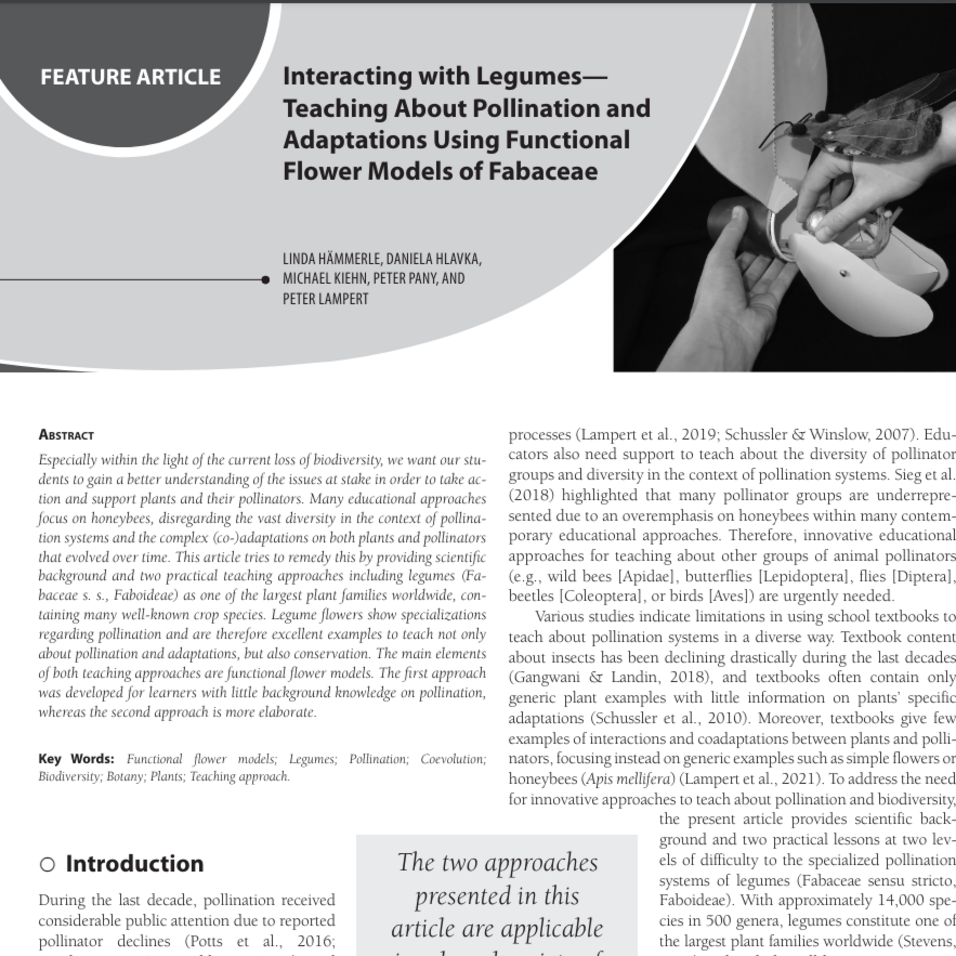Especially within the light of the current loss of biodiversity, we want our students to gain a better understanding of the issues at stake in order to take action and support plants and their pollinators. Many educational approaches focus on honeybees, disregarding the vast diversity in the context of pollination systems and the complex (co-)adaptations on both plants and pollinators that evolved over time. This article tries to remedy this by providing scientific background and two practical teaching approaches including legumes (Fabaceae s. s., Faboideae) as one of the largest plant families worldwide, containing many well-known crop species. Legume flowers show specializations regarding pollination and are therefore excellent examples to teach not only about pollination and adaptations, but also conservation. The main elements of both teaching approaches are functional flower models. The first approach was developed for learners with little background knowledge on pollination, whereas the second approach is more elaborate.
Hämmerle, L., Hlavka, D., Kiehn, M., Pany, P., & Lampert, P. (2024). Interacting with Legumes – Teaching About Pollination and Adaptations Using Functional Flower Models of Fabaceae. The American Biology Teacher 86 (4), p. 205-212.
Free Access until May 18th, 2024 via this link.

